The Bees of Slovenia
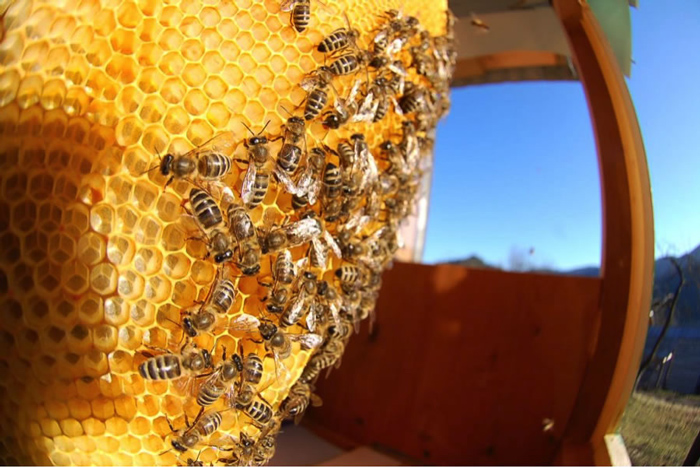 The thought of death takes dimension when you place your bare hand in a beehive for the first time. “You’ll be fine. These bees are from the forest; they are gentle. Trust me,†Blaž said as he urged me forward with his eyes towards the natural beehive he had cut from a forest tree. It wasn’t him I needed to trust I decided, but the thousands of buzzing bodies working and flying around me. With deep breaths I tried to calm my body to prove to them I was not afraid.
The thought of death takes dimension when you place your bare hand in a beehive for the first time. “You’ll be fine. These bees are from the forest; they are gentle. Trust me,†Blaž said as he urged me forward with his eyes towards the natural beehive he had cut from a forest tree. It wasn’t him I needed to trust I decided, but the thousands of buzzing bodies working and flying around me. With deep breaths I tried to calm my body to prove to them I was not afraid.
Something resolved in my mind, but not in words, and my muscles took over. There it was. My hand met the humming mass organism that is the hive. I touched their wings in a soft stroke. They cared nothing for me as they toiled unaffected.
In the Slovene language there is a verb to signify the death of a human. This word is shared only with bees. For all other creatures there is a separate word. Here in a little country in the Balkans, the life of a bee is respected just as the life of a human.
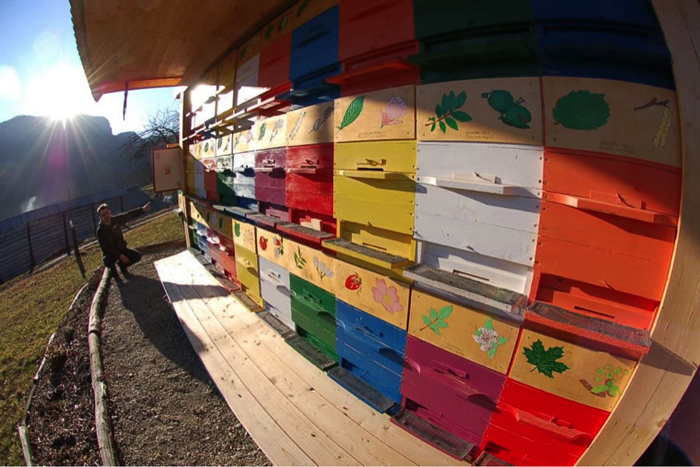
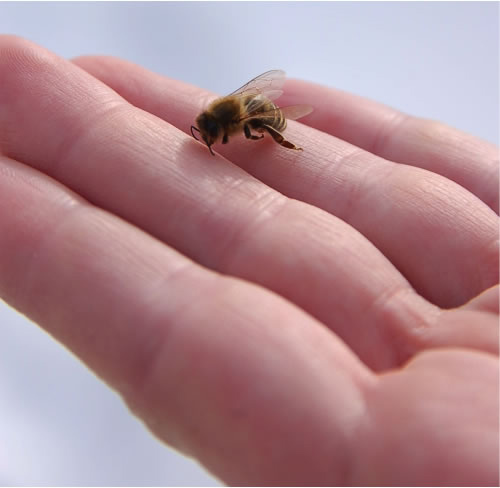 A country with around sixty-percent forest, Slovenia boasts a great deal of honey cultivated from the sugars of forest trees like spruce and pine. Now, with the weather patterns shifting, other subspecies are coming in to regions historically dominated by the Kranjska Äebela. Slovenia is working to preserve the Kranjska Äebela in its intended territory, and beekeepers and scientists struggle to find the best method to do so.
A country with around sixty-percent forest, Slovenia boasts a great deal of honey cultivated from the sugars of forest trees like spruce and pine. Now, with the weather patterns shifting, other subspecies are coming in to regions historically dominated by the Kranjska Äebela. Slovenia is working to preserve the Kranjska Äebela in its intended territory, and beekeepers and scientists struggle to find the best method to do so.
Painted Panels
The Slovenian landscape would not be the same without the thousands of bee houses that pepper roadsides and small mountain villages. Slovenians have painted their beehive panels for centuries, with the idea that bees have better orientation when panels are painted bright colors. When the paintings first appeared, the themes were drawn from Biblical imagery, held in high regard by a strongly Catholic population. After Slovenia’s entry into Yugoslavia, organized religion was banned and panel images depicted more cultural and landscape scenes rather than religious ones prior.
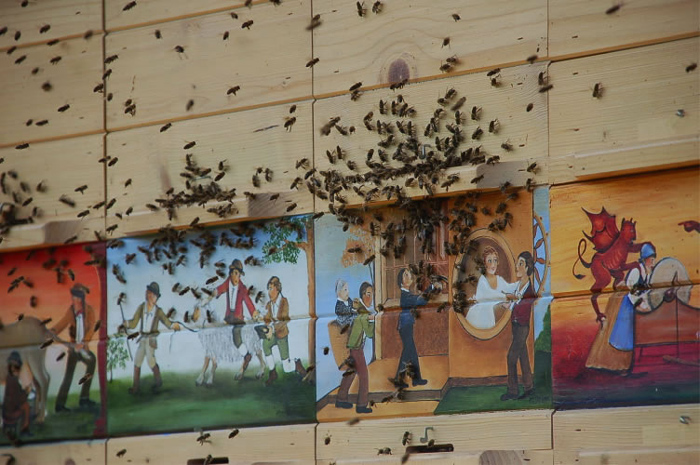
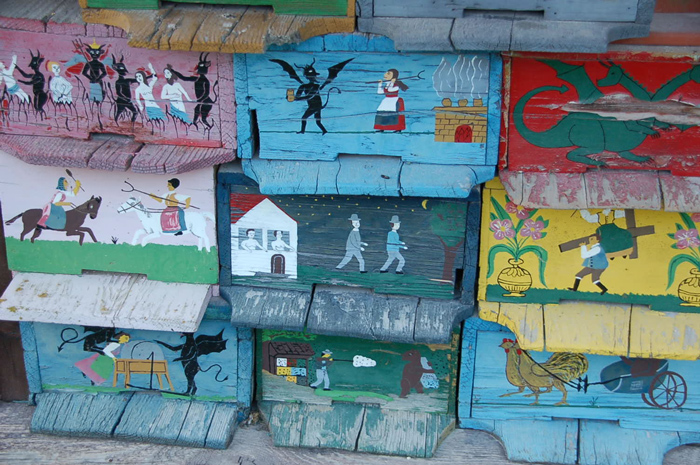
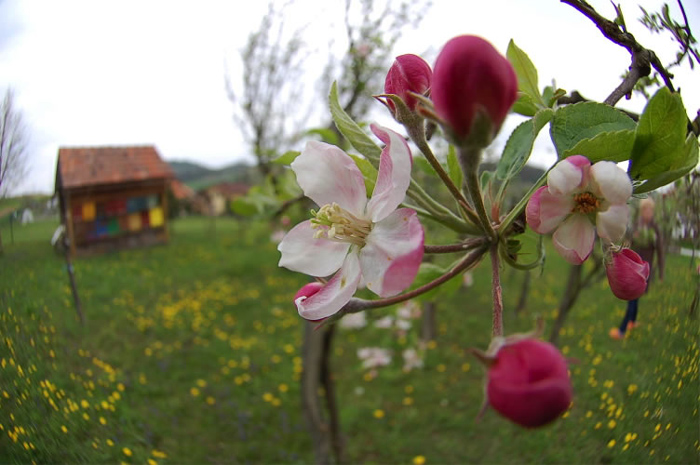 Bee-Mobiles
Bee-Mobiles
I met Damien on a long, winding road where his tourist resort is located, about a half-hour from Maribor in the Štajerska region of Slovenia. Damien caters to the growing interest in beekeeping and honey tourism in Slovenia. He provides rooms for rent where visitors can stay, a honey tasting room, and a honey massage room. Damien is certified in honey massage, a method that uses honey to extract toxins from the patient’s body.
About a mile from his home, Damien keeps his bees in several dozen hives stacked on the side of a gutted school bus. This way he is able to access the bees from inside the bus, and visitors can come and sit inside with the hives, but without significant exposure to the bees. He told me that tourists, many of them Japanese, meditate in his bee bus for hours. He opens the back of each hive and the smells, such as propolis, wax, pollen, and honey, and the buzzing sounds of the hive fill the bus, coaxing one into a relaxed Zen-like meditation.
A neighboring beekeeper arrived at Damien’s hives just as we were leaving. He informed us that several of his hives disappeared that day and he was coming to see if Damien was having similar problems. Luckily his hives were unaffected.
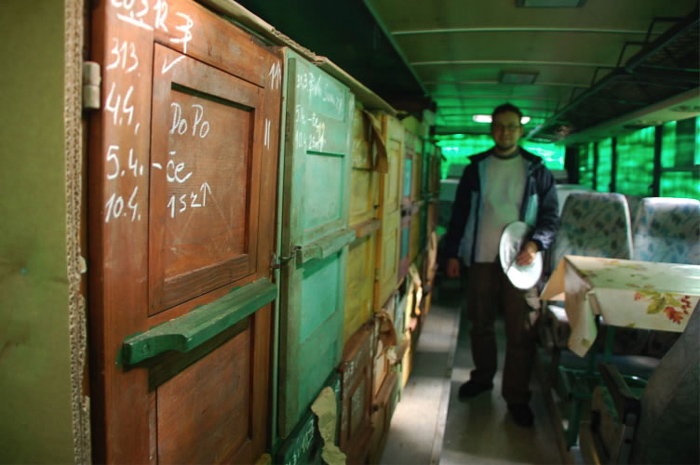
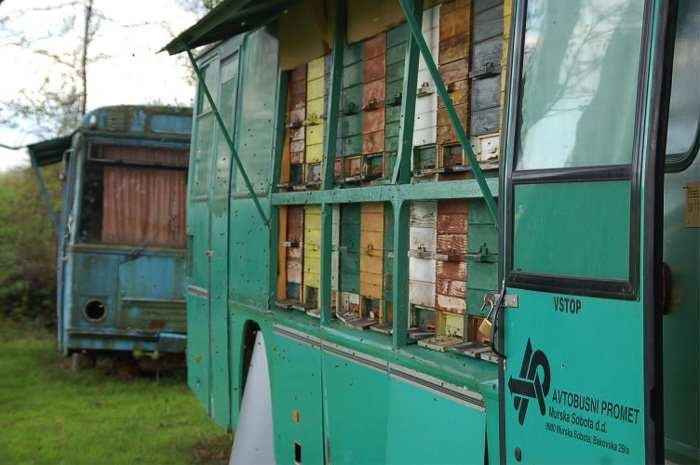 Many of the beekeepers with whom I spoke said Slovenia has not experienced the same massive loss of colonies like the United States. More than sixty-percent of the country is forested, which provides natural habitat for bees. Colony strength may also be attributed to the smaller-scale farming practices of Slovenia. Landowners often don’t own more than one hectare of land, a residual trend of socialist policy.
Many of the beekeepers with whom I spoke said Slovenia has not experienced the same massive loss of colonies like the United States. More than sixty-percent of the country is forested, which provides natural habitat for bees. Colony strength may also be attributed to the smaller-scale farming practices of Slovenia. Landowners often don’t own more than one hectare of land, a residual trend of socialist policy.
Even with the nature of land ownership and forest areas, beekeepers are starting to see colony loss. Many are attributing this to improper use of pesticides. One beekeeper claimed that some of his stronger hives attacked his weaker hives. He believes, as do several of his fellow beekeepers, that the medicine prescribed by veterinarians for Varroa mites causes this reaction.
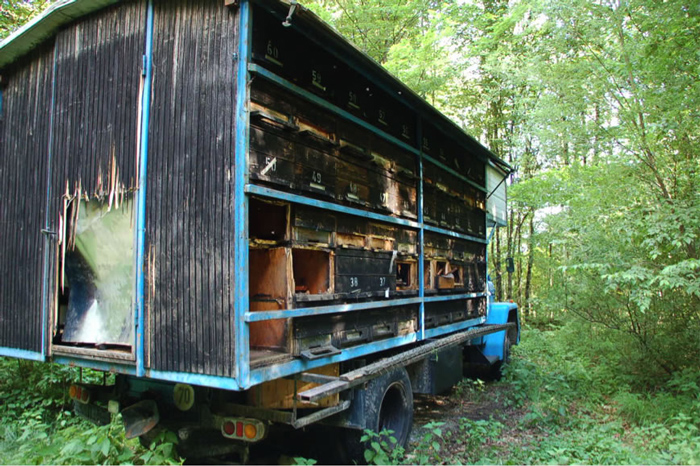
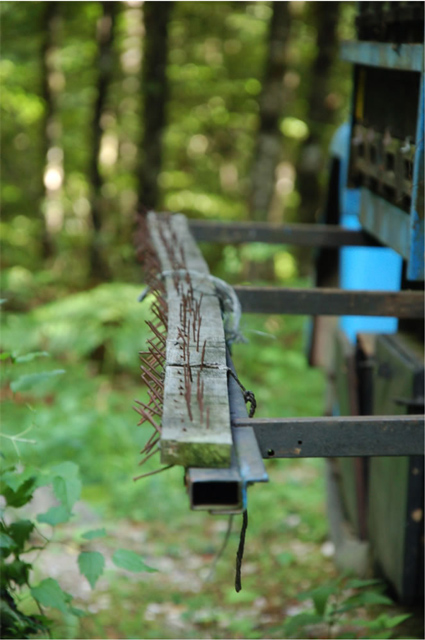
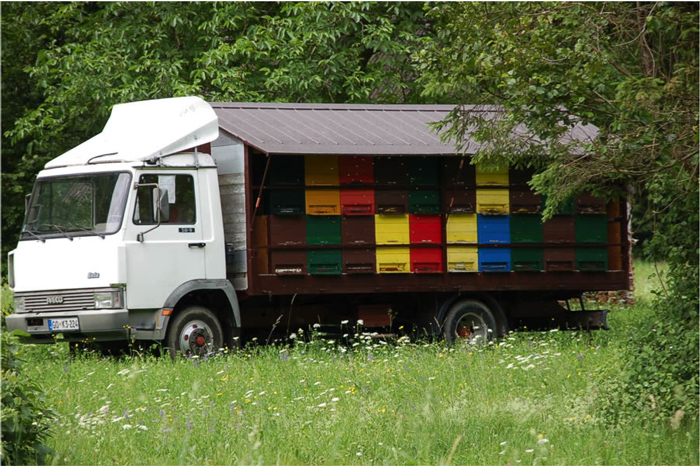 Every Slovenian knows at least one beekeeper, but likely closer to ten. Slovenians are proud of their beekeepers, and covet the dark amber honey that they cultivate. It is easy to compare the Slovenian and the Slovenian bee: both are considered hard working, gentle, quiet, and patient. Although many people denounce this simplified attribution, I couldn’t help but find these characteristics in every beekeeper I met.
Every Slovenian knows at least one beekeeper, but likely closer to ten. Slovenians are proud of their beekeepers, and covet the dark amber honey that they cultivate. It is easy to compare the Slovenian and the Slovenian bee: both are considered hard working, gentle, quiet, and patient. Although many people denounce this simplified attribution, I couldn’t help but find these characteristics in every beekeeper I met.
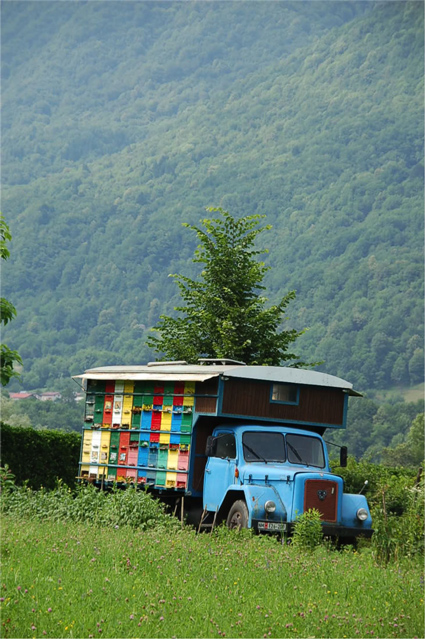 The buzz of the hives rose and fell as Damien opened the back panel, indicating an alert and busy colony. My heart rose in the same fashion, but calmed with the smell of honey and the sound of the gentle buzzing. One lone bee flew around her hive, eager to get back in and back to work.
The buzz of the hives rose and fell as Damien opened the back panel, indicating an alert and busy colony. My heart rose in the same fashion, but calmed with the smell of honey and the sound of the gentle buzzing. One lone bee flew around her hive, eager to get back in and back to work.
Photo credits: Meredith Turk

